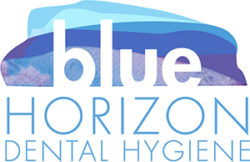 Hey John at 95.1 The Peak FM…Once again I’d like to respond to your audience about things dentaI. Some sensational journalism has caused feathers to fly! Is flossing ineffective? The authors of the report referenced in a recent news story stated that there was no strong evidence of flossing effectiveness. I think most people are missing the point here. Just because a “perfect study” has not been conducted, doesn’t mean flossing is ineffective. It’s extremely challenging to design studies which prove effectiveness. Nobody has said that flossing isn’t beneficial. Let’s not split hairs.
Hey John at 95.1 The Peak FM…Once again I’d like to respond to your audience about things dentaI. Some sensational journalism has caused feathers to fly! Is flossing ineffective? The authors of the report referenced in a recent news story stated that there was no strong evidence of flossing effectiveness. I think most people are missing the point here. Just because a “perfect study” has not been conducted, doesn’t mean flossing is ineffective. It’s extremely challenging to design studies which prove effectiveness. Nobody has said that flossing isn’t beneficial. Let’s not split hairs.
What we do know is that having food rotting between your teeth and gums is obviously not good and for many, flossing may be the only way to get rid of it. There is good scientific evidence that gingivitis (inflamed gums) and dental cavities are caused by bacteria; and we have plenty of evidence that food particles provide a sticky place for bacteria to grow on. Your toothbrush can’t always reach the areas where your teeth touch or under the edge of the gums between your teeth. Food particles left there after brushing alone go moldy, rot and smell just like any other food does when you leave it lying around especially somewhere dark and warm. Hidden from sight, disease-causing bacteria love to grow there and over time crusty tartar builds up. We see a huge contrast between the gum health of folks who do clean those hard to reach areas between their teeth and those who don’t and where and how often those folks get cavities.
It’s never one method of mouth care fits all. For some folks, floss is NOT the best tool to use. It depends on the spacing between your teeth, how your teeth are lined up and ultimately your dexterity. Many don’t use floss properly and therefore continue to have dental disease. It’s a tricky thing to do well especially if you have lots of fillings, crowns, bridges or dental implants. Flossing may or may not be recommended for your daily home care routine. In those cases other “between-the-teeth” tools will be recommended for daily use. After checking out the health of your mouth, your dental hygienist will recommend a customized homecare plan for you and share personalized tips for the daily routine required to keep your teeth and gums healthy.
Cleaning carefully and regularly between your teeth and gums can reduce inflammation and eliminate the bleeding associated with gingivitis. This helps prevent the disease from progressing into a more serious chronic infection which can lead to tooth loss. By the way, some medical conditions (e.g. Diabetes) and smoking increase the risk for developing gum disease. Having infected gums affects your overall health. Since reducing inflammation has an impact on your overall health, we would be remiss as dental health professionals not to recommend flossing, when it’s the best choice, to people who have or have an increased risk of developing gingivitis.
Lastly, let’s not forget fresh breath. When someone hasn’t cleaned between their teeth for two or three days (or longer), you can smell it on their breath. You know, that underlying sulfur, rotten smell…
The choice is yours to make…use whatever tools are recommended to be as healthy as you can be, to smell fresh and to save on dental costs…or not?
